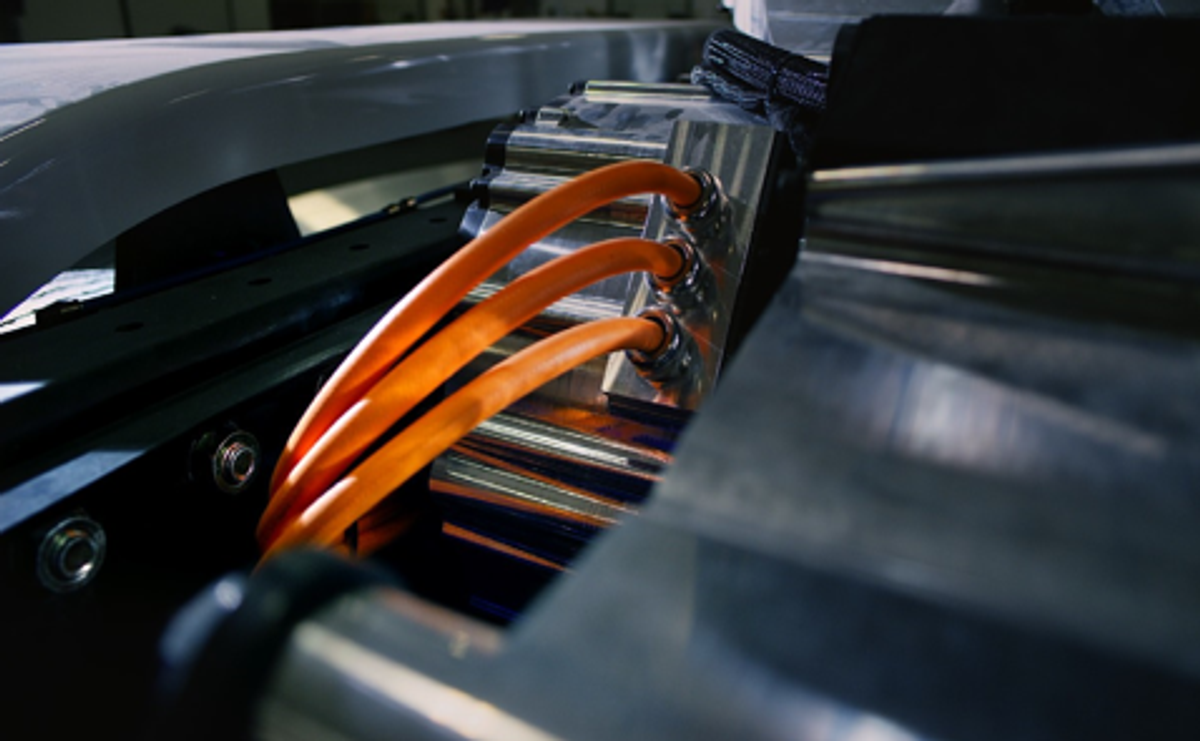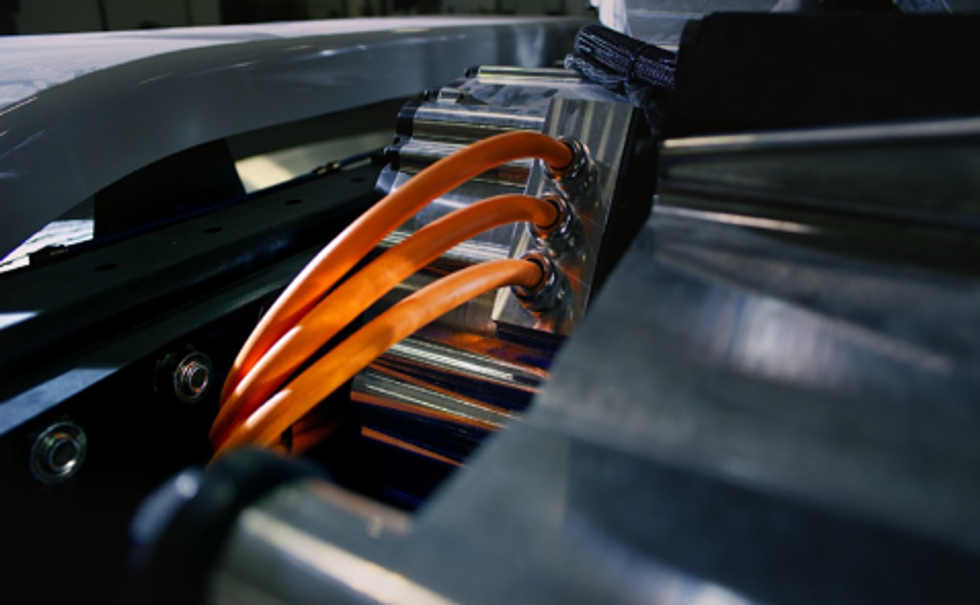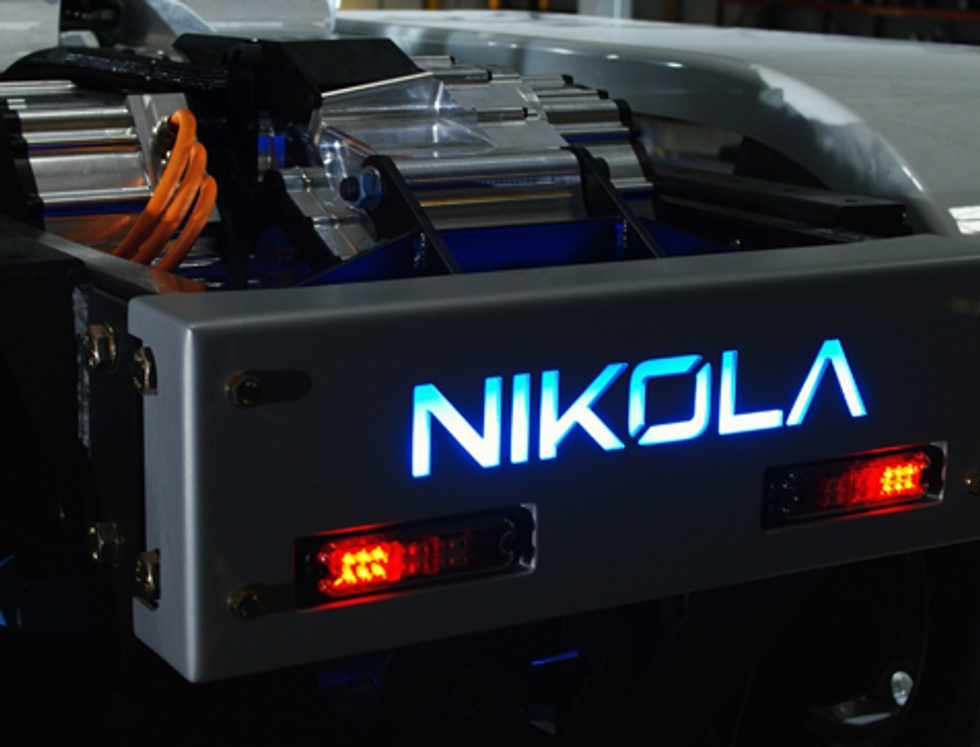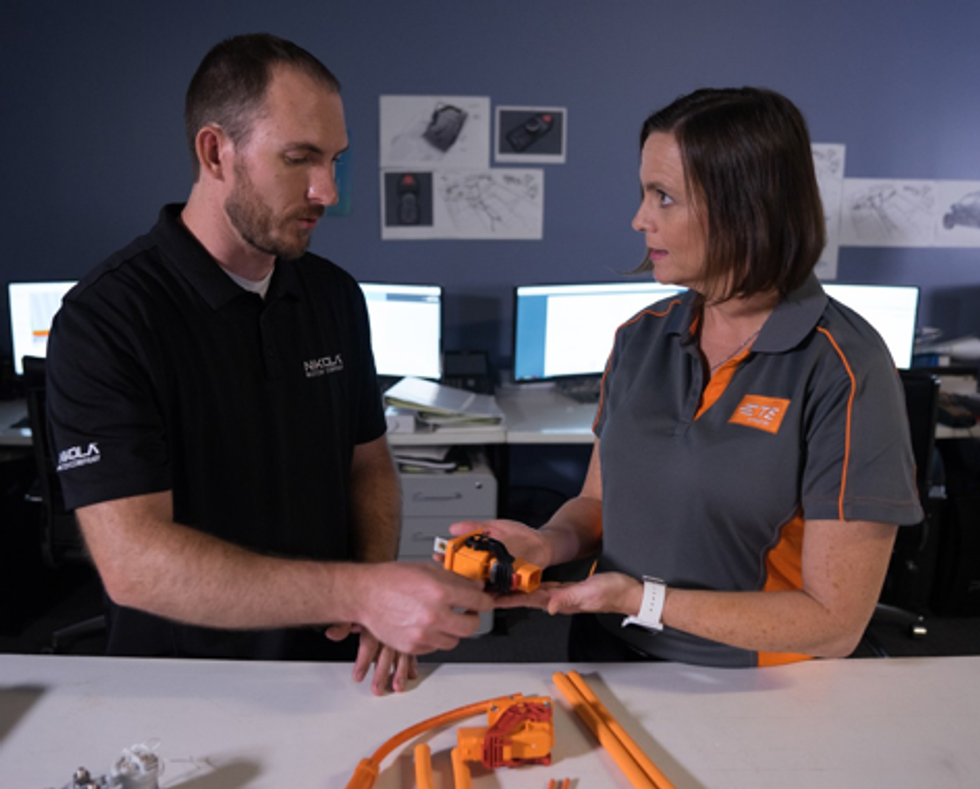Trucking is vital to the way we live. Trucks haul the final miles between warehouses and stores. Supermarket shelves would be empty without their weekly deliveries. Long-haul trucks carry what’s needed to where it’s needed quickly and affordably. It’s fair to say that without trucking, life as we know it would not be possible.
While trucking may be essential, it comes with environmental costs associated with diesel engine emissions. Standards are getting tougher around the world. Europe is moving towards outlawing emissions altogether by 2030.
To make diesel engines greener, manufacturers have partnered with TE Connectivity to develop and apply the necessary fluid quality, pressure and temperature sensors used in after-treatment emission systems that reduce pollutants. SCR (Selective Catalytic Reduction) technology reduce NOx emissions. SCR technology relies on the appropriate dosing of urea (Diesel Emission Fluid – DEF) into the exhaust stream from the engine through a catalyst to reduce NOx into ammonia, nitrogen and oxygen. TE’s urea quality sensors ensure the concentration and quality of urea in the DEF fluid meets industry standards. If the ratio of urea to demineralized water is out of specification or the urea fluid is contaminated, the sensor provides this feedback to the engine control system which then adjusts engine operation to ensure the exhaust emissions meet environmental regulations.
Although cleaner diesel engines are an improvement, they still create carbon-based emissions. The future may lie in harnessing new technologies that rely on cleaner forms of energy.
A FUEL FOR TOMORROW: HYDROGEN
One promising solution is a fully electric long-haul truck currently under development by Nikola Motor Company. Hydrogen fuel cells will create the current that charges the truck’s batteries and powers the drive train.
The idea of hydrogen as a fuel is not a new one. In fact, it precedes the era of oil. In 1806, Francois Isaac de Rivaz invented the first hydrogen-powered internal combustion engine. The hydrogen was held in a balloon.
By 1863, the hydrogen-powered Lenoir Hippomobile became the first successful commercial vehicle. Gas powered engines started appearing in 1870.1 Fast forward 150 years and technology has advanced to the point where hydrogen is ready for prime time. Hydrogen fuel cells have already proven themselves in space flight, and technology is on the cusp of making hydrogen commercially viable.
TURNING HYDROGEN INTO ELECTRICITY
While the technology behind the hydrogen fuel cell may be sophisticated, the science is a fairly basic electrochemical process. First, hydrogen gas meets an anode inside a fuel cell. Together with a catalyst, the anode splits the hydrogen in two creating a hydrogen ion (a proton) and an electron.
The reaction at the anode: 2H2 > 4H+ + 4e-
Attracted by the cathode, the positively charged hydrogen ions pass through an electrolytic membrane. Unable to pass through this membrane, the electrons flow through a wire outside the fuel cell, eventually arriving at the cathode and completing the circuit. At the cathode, both hydrogen particles mix with oxygen in the air where they form water and generate current.
The reaction at the cathode: O2 + 4H++4e- > 2H20
In the PEM (Proton Exchange Membrane) fuel cell used on a hydrogen-powered vehicle, semi bipolar plates are positioned on either side of the cell acting as both distributors as well as current collectors. The electrolyte is contained in a thin polymer membrane sandwiched between these plates. This membrane only allows protons to pass through it. In order to function properly, this membrane is kept moist by the water produced by the fuel cell.2
A typical fuel cell creates 0.6V to 0.7V per cell. To create sufficient voltage to charge the truck’s batteries, PEM fuel cells are connected in a series, otherwise known as a fuel cell stack. The greater the surface area of a fuel cell, the more current can be generated.3 By connecting cells in a series to build voltage and increasing cell area to boost current, it’s possible to generate the large amounts of electrical power necessary to power a class 8 truck.
The most frequently used catalyst in a hydrogen fuel cell is platinum. However, metallic bipolar plates like these can corrode and reduce the effectiveness of the fuel cell. Low temperature fuel cells feature lightweight metals, graphite or carbon/thermoset composites as bipolar plate material.4 A stack of lithium batteries collects the energy generated by the fuel cells and distributes it across four different motors, one for each wheel in the rear of the truck.
Working with their engineering team, we’re demonstrating the capabilities of TE connectors in this high voltage environment.
ELECTRICITY MAKES IT RUN, COLLABORATION MAKES IT WORK
For the successful introduction of a major innovation like a fully electric class 8 truck, utmost importance is the safety and reliability of the vehicle. Nikola partnered with TE Connectivity to leverage our full portfolio of harsh environment connectors, sensors and high voltage solutions to ensure this high level of safety and reliability.
Working with their engineering team, we’re demonstrating the capabilities of TE connectors in this high voltage environment. For instance, TE’s high voltage connectors have integrated high voltage interlocks (HVIL) that ensure the system is safe from high voltage potentials when the connectors are in an unmated condition. The HVIL also ensures that the unmating of the terminals is completed with the high voltage potential removed. This eliminates any possibility of destructive arcing to occur between the terminals during the unmating process. The high voltage connectors are fully shielded to keep electromagnetic pulses from interfering with other critical circuitry. TE’s standard Deutsch connectors, known for their reliability in harsh environments, also carry-over to hydrogen fuel cell powered vehicles.
TE sensor technologies in E-motor resolvers, temperature, voltage, current, humidity, fluid quality, fluid level, position and pressure sensors, can provide robust solutions for various applications within the truck.
For instance, sensors play an important role in the stability of a fully electric truck. Around curves, the wheels on the inside of the curve should turn slower than those on the outside. In a standard truck, this is impossible since the wheels cannot turn independently. In the fully electric truck, each wheel motor powers its wheel independently. Thousands of times a second, the truck’s on-board computer samples sensor data from each wheel as well as the steering wheel, brakes, and accelerator pedal, then calculates how each wheel should respond. The motion control system sends this information to each motor telling it how to react. Because the inner wheels can slow while the outer wheels can accelerate, the truck has more control around curves, reducing the chances of fishtailing or rollovers.
As well, TE’s portfolio of high-speed interconnection solutions enable the reliable transfer of big data for various systems that play an important role in the final, road-ready Nikola One class 8 truck.
A NEW LEVEL OF EFFICIENCY
To keep a fully loaded truck moving requires a minimum of 1850 lb-ft of torque. 5 Diesel engines sacrifice acceleration and horsepower to generate sufficient torque. In the hydrogen electric truck, torque is instantaneous.6 Energy storage-to torque on an EV is more than 90% efficient rather than 35% for diesel engines.7 Since this new breed of trucks has an easier time generating torque, they can also have higher horsepower. The Nikola One’s 1000 horsepower system is capable of powering the truck up a mountain road at 65 miles an hour. Slow-moving trucks with blinking rear lights may one day be a distant memory.
The only emissions from a Nikola fully electric truck powered by hydrogen fuel cells are distilled water. But the benefits go far beyond the environmental.
Hydrogen filling is measured in kilograms. The Nikola hydrogen/electric system gets approximately 10 miles per kilogram of hydrogen. A modern diesel engine has to get 7.2 miles per gallon.8 So hydrogen is approximately 40% more efficient, since the potential energy in 1 kg of hydrogen is approximately the same as 1 gallon of diesel.
Because the hydrogen fuel cells create current as long as there’s hydrogen in the tank, they continually recharge the batteries. With an 70 kilogram tank, Nikola’s new breed of trucks have a range of 500 to 800 miles (depending on terrain) and a reserve charge of nearly 100 miles once all the hydrogen has been used. A plug-in battery electric truck would fall far short of that distance.
SO WHERE DO YOU GET A HYDROGEN FILL-UP?
Making the hydrogen/electric technology the future of trucking will require a new energy infrastructure to produce hydrogen, too. Rather than a central hub distributing hydrogen through pipelines, the current plan is to build a network of hydrogen-production plants at truck stops across the country. Powered by the electric grid as well as solar, wind, tidal, or geothermal energy, these mini-energy plants will give truckers a reliable source of hydrogen fuel to take them as far as they need to go and do it more affordably, more efficiently, more sustainably and more profitably than ever before.
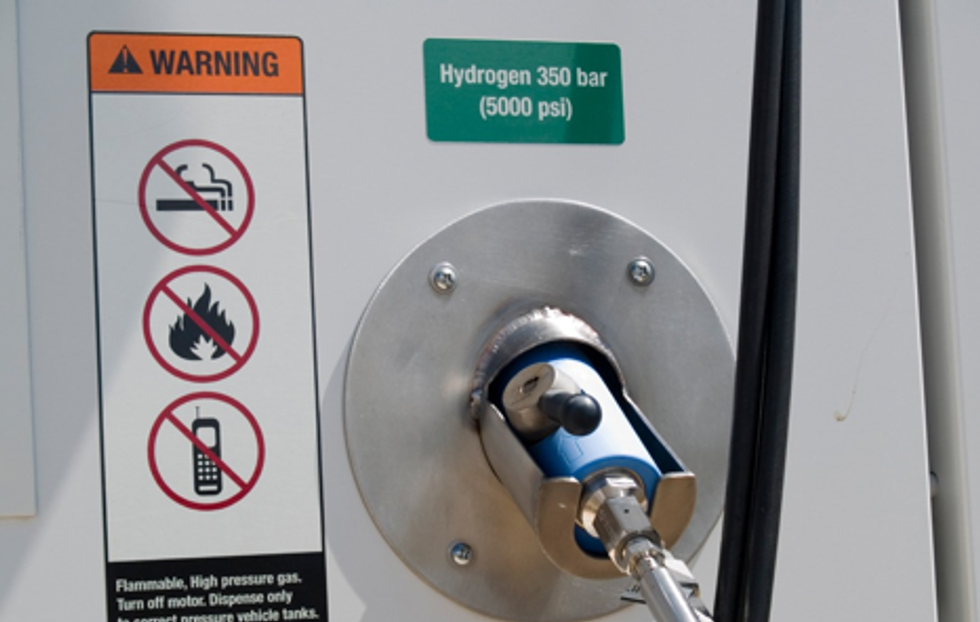
At TE, we’re proud to play a part in shaping a greener, cleaner, more productive tomorrow for the trucking industry.
References:
[1] https://fuel-efficient-vehicles.org/energy-news/?page_id=819
[2] https://sepuplhs.org/high/hydrogen/hydrogen.html
[3] https://www.fuelcellstore.com/fuel-cell-stacks
[4] Karim Nice & Jonathan Strickland “How Fuel Cells Work” 18 September 2000. HowStuffWorks.com. https://auto.howstuffworks.com/fuel-efficien-cy/alternative-fuels/fuel-cell.htm
[5] https://www.autotraining.edu/blog/the-extraordinary-engine-configu-rations-of-18-wheelers/
[6] https://www.carthrottle.com/post/how-do-electric-vehicles-produce-instant-torque/
TE Connectivity is a global industrial technology company developing electrical and electronic products engineered to reliably connect and protect the flow of data, power, and signal. TE products and solutions are used in electric vehicles and aircraft, digital factories, smart homes, life-saving medical devices, efficient utility networks, and the global communications infrastructure. Headquartered in Schaffhausen, Switzerland, TE has more than 85,000 employees, including 8,000 engineers, working alongside customers in approximately 140 countries.
